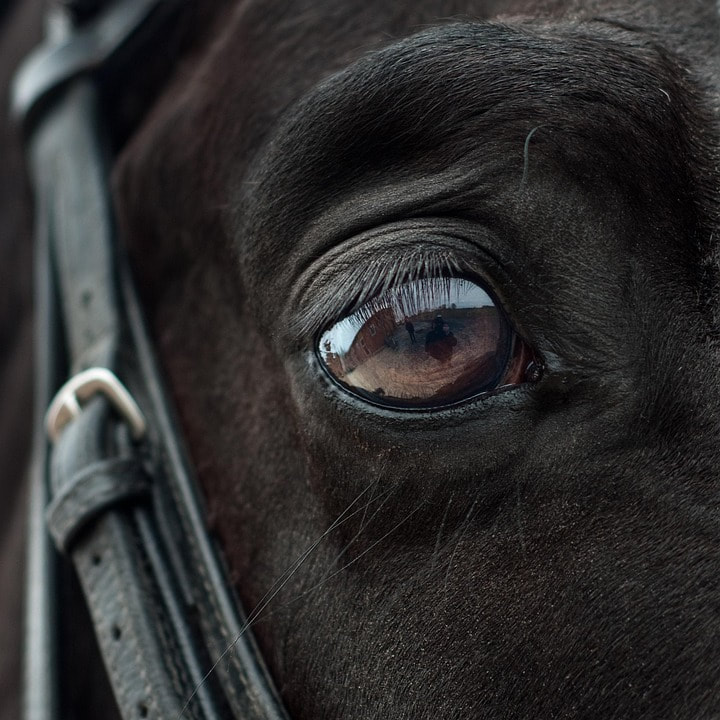Classical Differences
Something that has happened in the competitive world of modern dressage is that the tests are becoming harder, with different aspects that are either incorporated or lost. Movements are becoming less than classical and causing disturbance within the horse’s natural rhythm. Some movements are confusing, while others are not ‘forward’ movements such as the Turn on the Forehand. This has been happening for years and the Academy wants to promote the classical horsemanship aspect, sticking as close to the ancient masters’ techniques and theories as close as possible and only incorporating change when science proves it is more beneficial.
One of the biggest changes is the introduction of something old and nearly forgotten: Brigadier General Kurt Albrecht’s (former director of the Spanish Riding School) Stages of classical development. These stages are filled with degree tests. He said that Stage 1 is about the Basic Campaign horse, developing the skills to move forward, steady and straight. The Stage 1 horse works more or less on a natural curvature of spine in all movement. By the First Degree, the horse will be able to have the first degree of bending needed to canter a fifteen meter circle.
Stage 2 applies to the Medium Campaign horse that is developing collection and extension in degrees. The term ‘Plié’ is used to describe a ‘Shoulder-in’ that is performed with just as much outside leg as inside. The horse is able to bend much smaller, performing ten meter voltes (small circles) at canter and eventually leading to the fourth degree to do half pirouettes at the canter. Another lost factor consists of using the Uberstreichen to show that the Medium horse is able to carry himself without relying on both reins.
Stage 3 is based on the fifth degree of bending, engagement, collection and extension. The Advanced horse is able to perform beautifully, but is not as collected to perform the Airs of Manége as a School (Specialized) horse could in Stage 4, the sixth degree. Finally, yet he states that it is never final, is Stage 5 or the seventh degree, where the School Master can perform the Airs Above the Ground.
These stages give the International Riding Academy’s Classical Dressage program more structure and integrity. The tests are labelled consecutively, which is a bit different at first, but is easier once a person gets used to the classical system. It is exciting to be part of something so old and nearly forgotten.
Classical Aspect
One of the biggest changes is the introduction of something old and nearly forgotten: Brigadier General Kurt Albrecht’s (former director of the Spanish Riding School) Stages of classical development. These stages are filled with degree tests. He said that Stage 1 is about the Basic Campaign horse, developing the skills to move forward, steady and straight. The Stage 1 horse works more or less on a natural curvature of spine in all movement. By the First Degree, the horse will be able to have the first degree of bending needed to canter a fifteen meter circle.
Stage 2 applies to the Medium Campaign horse that is developing collection and extension in degrees. The term ‘Plié’ is used to describe a ‘Shoulder-in’ that is performed with just as much outside leg as inside. The horse is able to bend much smaller, performing ten meter voltes (small circles) at canter and eventually leading to the fourth degree to do half pirouettes at the canter. Another lost factor consists of using the Uberstreichen to show that the Medium horse is able to carry himself without relying on both reins.
Stage 3 is based on the fifth degree of bending, engagement, collection and extension. The Advanced horse is able to perform beautifully, but is not as collected to perform the Airs of Manége as a School (Specialized) horse could in Stage 4, the sixth degree. Finally, yet he states that it is never final, is Stage 5 or the seventh degree, where the School Master can perform the Airs Above the Ground.
These stages give the International Riding Academy’s Classical Dressage program more structure and integrity. The tests are labelled consecutively, which is a bit different at first, but is easier once a person gets used to the classical system. It is exciting to be part of something so old and nearly forgotten.
Classical Aspect
- Horse and rider combinations do not win titles, trophies, ribbons or cash prizes for winning over another horse and rider combination
- No stress on the amount of time for development
- Based on classical masters and not influenced by current fads
- Correct work leads to longevity, health and well-being. Minimum age limits are enforced to prevent young horses from having to compete at higher, more stressful levels before they can be physically and mentally prepared
- Based on individual horse conformation and ability, not prejudiced towards large Warmbloods
- Testing is done via video, so one can stay at home within comfort limits and not stressed travelling or subject to contagious diseases
- Riders strive to win sponsorship, trophies, ribbons and cash prizes
- Riders push up the levels fast as possible or the levels are skipped
- Fads like rollkur (hyperflexion) are used in the name of winning
- Severe stress is dealt with chemically prior to riding. Nothing will stop the horse from winning. Injections may be given ahead of time to prepare for competition
- Involves only the best breeding of Warmbloods to compete
- Horses are stalled for longer periods while at competitions or in preparation of competitions
- Horses are hauled great distances & exposed to many other horses





